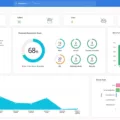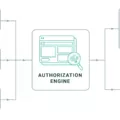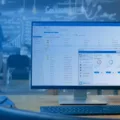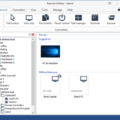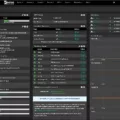Remote Desktop Protocol (RDP) is a secure network communications protocol developed by Microsoft that allows network administrators to remotely diagnose and solve problems encountered by individual users, as well as to provide users with remote access to their physical work desktop computers. This protocol provides a wide range of benefits to its users, enabling them to be more productive and efficient.
RDP is a great way for users to access files and applications on any device from any location, without the need for high bandwidth consumption. It allows users to access data from an external source, such as from their home or office computer. Additionally, RDP also offers security features such as encryption and authentication protocols, which protect against malicious intrusions and unauthorized access to sensitive data stored on the server side.
However, despite its many advantages, RDP is vulnerable to exploitation by hackers who use it to gain access to the host computer or network. Once accessed, they can install ransomware on the system, preventing regular users from accessing their devices or data until payment has been made. To reduce this risk of attack, organizations should ensure that they are using up-to-date versions of Remote Desktop Protocol (RDP) and have implemented appropriate security measures in place.
Ultimately, Remote Desktop Protocol offers a great many benefits for organizations looking for secure remote access solutions and improved collaboration capabilities between staff members at different locations. By taking appropriate security measures into consideration when implementing them in an organization’s system environment, RDP can help reduce the risk of malicious attacks and ensure effective management of data over long distances.
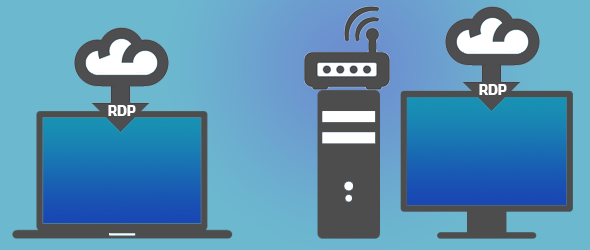
Uses of Remote Desktop Protocol (RDP)
RDP is used to remotely connect two computers so that a user can access the desktop of another computer over a network connection. This provides users with the ability to remotely access their work desktops from anywhere in the world, allowing them to securely manage and troubleshoot problems, transfer files, and provide technical support. Additionally, RDP allows users to securely share resources such as printers and files between two or more computers. RDP is also often used by system administrators for remote management of servers, as well as by end-users who need to access applications or data stored on another computer.
The Benefits of Using Remote Desktop Protocol (RDP) for Hackers
RDP, or Remote Desktop Protocol, is a powerful tool used by hackers to gain remote access to computers and networks. This access enables them to bypass security measures, such as firewalls, and install malicious software on the system. RDP is especially attractive to hackers because it can be used to access system resources without having physical access to the computer or network.
Once inside, hackers can use RDP to steal confidential data, disrupt services, and even install ransomware that locks users out of their own systems until a ransom payment is made. RDP also allows hackers to remain undetected by cloaking their presence on the system and preventing administrators from detecting them until it’s too late.
Overall, RDP is an attractive tool for hackers because it provides them with a way to gain remote access and control over computers and networks without having any physical presence on the system.
The Use of Remote Desktop Protocol (RDP) Today
Yes, RDP (Remote Desktop Protocol) is still widely used today. It is the most commonly used protocol for remote desktop software, and it is used for connecting to a remote computer over a network connection. RDP provides users with secure access to their files and applications, as well as full control of their remote desktops. With RDP, users can easily share applications, transfer files between computers, and have multiple users connected to the same desktop at the same time. RDP also supports advanced features such as audio and video streaming, high-quality performance, and secure encryption of data. It is compatible with many operating systems including Windows, macOS, Linux, and iOS.

Source: beyondtrust.com
Risks of Using Remote Desktop Protocol (RDP)
The use of Remote Desktop Protocol (RDP) can pose significant security risks to organizations. RDP provides a convenient way to remotely access computers and networks, but it also opens up the possibility of unauthorized access. The main risks associated with using RDP include:
1. Weak or Default Passwords: The same weak or default passwords may be used for multiple remote logins, leaving them vulnerable to brute-force attacks. Organizations should manage their passwords carefully to ensure their strength and use two-factor authentication when possible.
2. Unrestricted Port Access: If RDP is available on an unrestricted port, attackers can easily gain access by scanning the network for open ports. Organizations should restrict access to only trusted IP addresses and implement a secure firewall configuration to reduce the risk of unauthorized access.
3. Malicious Software: Attackers can use RDP as a vector for introducing malicious software into an organization’s network, potentially allowing them to gain control of the system or steal sensitive data. Organizations should deploy antivirus solutions and regularly patch their systems to mitigate this risk.
4. Data Leakage: RDP can be used to exfiltrate sensitive data from an organization’s network, either directly through the protocol itself or by installing malicious software on the target machine that collects data from other connected devices in the network. Organizations should implement monitoring solutions and limit user privileges as much as possible in order to reduce this risk.
Exploring the Vulnerability of Remote Desktop Protocol (RDP)
Yes, RDP can be exploited. Remote Desktop Protocol (RDP) is a popular protocol used to connect to remote computers over the internet. However, it has recently been discovered that there is a security bug in the protocol which could allow unprivileged users to access other connected machines if exploited. This could lead to serious data-privacy issues, as well as lateral movement and privilege escalation. Therefore, it is important for organizations and individuals to take measures to protect themselves against potential RDP exploits. These measures may include using strong authentication methods such as multi-factor authentication or passwordless authentication and ensuring they are running the latest version of RDP with all security patches applied. Additionally, organizations should ensure their internal networks are properly configured and segmented so that unauthorized users cannot gain access to sensitive systems or data stores.
Using Remote Desktop Protocol (RDP) Without a Virtual Private Network (VPN)
Yes, it is possible to use Remote Desktop Protocol (RDP) without a Virtual Private Network (VPN). To do so, you must configure your home or office router with port forwarding for RDP. This will allow incoming traffic from the Internet to be sent to the computer running RDP on your local network. Additionally, you must also set up an account with a Dynamic DNS provider, which will allow you to connect to your router remotely by using a unique domain name instead of an IP address. Once these steps are completed, you can connect to the computer running RDP remotely by using the external IP address of your router and the credentials associated with your Dynamic DNS account.
Does Remote Desktop Protocol (RDP) Hide IP Addresses?
No, Remote Desktop Protocol (RDP) does not hide IP address. RDP is a proprietary protocol developed by Microsoft that provides a user with a graphical interface to connect to another computer over a network connection. It allows users to access remote desktops, applications, and data from any device with an internet connection. Although RDP can provide secure connections, it does not provide any encryption or security measures that would conceal the IP address of the user. Therefore, the user’s IP address is visible to anyone monitoring the connection. To hide the IP address of the user, an additional layer of security must be added such as a VPN or SOCKS proxy.
Can Remote Desktop Protocol (RDP) Be Intercepted?
Yes, RDP sessions can be intercepted by a hacker through a man-in-the-middle attack. This type of attack involves the hacker intercepting communications sent between a client and a terminal server using either Address Resolution Protocol (ARP) spoofing or Domain Name System (DNS) spoofing. With ARP spoofing, the attacker uses malicious software to broadcast false ARP messages across a local area network in order to intercept traffic meant for another machine on the same network. DNS spoofing works similarly by allowing the attacker to redirect traffic intended for one domain name server to another, malicious server. In both cases, this allows the hacker to gain access to all data transmitted between the client and the terminal server.
Does Windows 10 Support Remote Desktop Protocol (RDP)?
Yes, Windows 10 does allow Remote Desktop Protocol (RDP) connections. RDP is available on all Windows 10 Pro and Enterprise editions, as well as Windows 8.1 and 8 Enterprise and Pro, Windows 7 Professional, Enterprise, and Ultimate, and all versions of Windows Server newer than 2008. However, it is not available on Windows 10 Home edition. To use RDP to connect to a computer running Windows 10, you must ensure that the computer has RDP enabled first.
Conclusion
In conclusion, RDP is a secure network communications protocol developed by Microsoft that enables administrators to remotely diagnose user problems and provides users with remote access to their physical work desktop computers. Its biggest advantage is the ability to access network resources, databases, and line-of-business software applications without the limitations and high bandwidth demands of a VPN. Unfortunately, hackers also use RDP to gain access to networks and install ransomware on systems, which can cause serious damage to businesses or individuals. Despite its potential security risks, RDP remains a popular protocol due to its robust features and ease of use.

